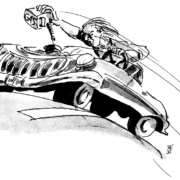Combustion Chamber Heat Loss

“Lightweight walls have the intrinsic potential for much higher performance than massive walls due to their lower thermal inertia.” –Baldwin, Biomass Stoves: Engineering Design, Development, and Dissemination, 1987
After about 80 minutes, the earthen mass wall in the illustration above gets hot enough to equal the heat loss in a single metal wall.
After about 20 minutes, the fired thin walled fired clay wall gets hot enough to equal the heat loss in a single metal wall.
After 80 minutes, the earthen high mass wall loses less heat compared to the bare metal wall resulting in better performance when used in long-term applications.
After heating up, fired clay walls and high mass earthen walls lose around 300 watts compared to 500 watts from the bare metal wall.
Insulated metal walls with 1cm insulation lose around 75 watts and food is cooked more quickly while using less fuel. The problem is that insulated metal walls get too hot and do not last very long.
For this reason, stove companies started making double walled stoves with cold air moving between the walls to increase longevity.
Thanks to Dr. Sam Baldwin for quantifying the effect of design choices!











